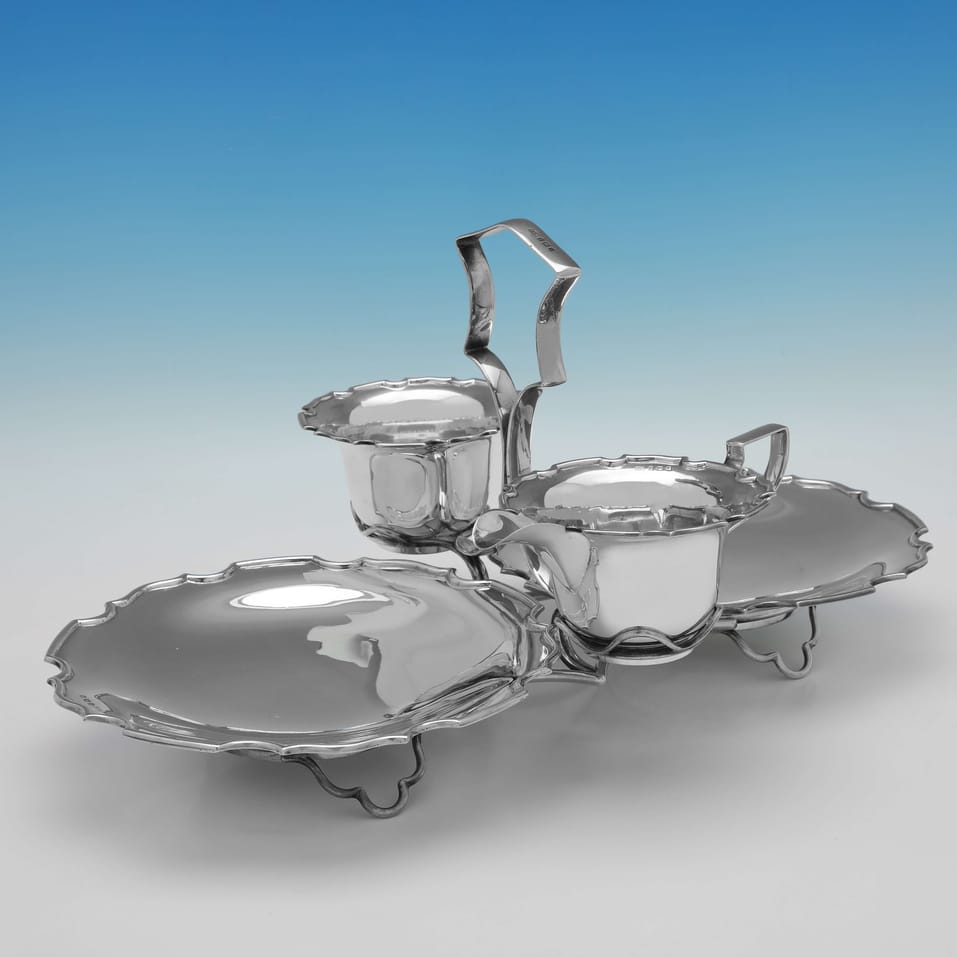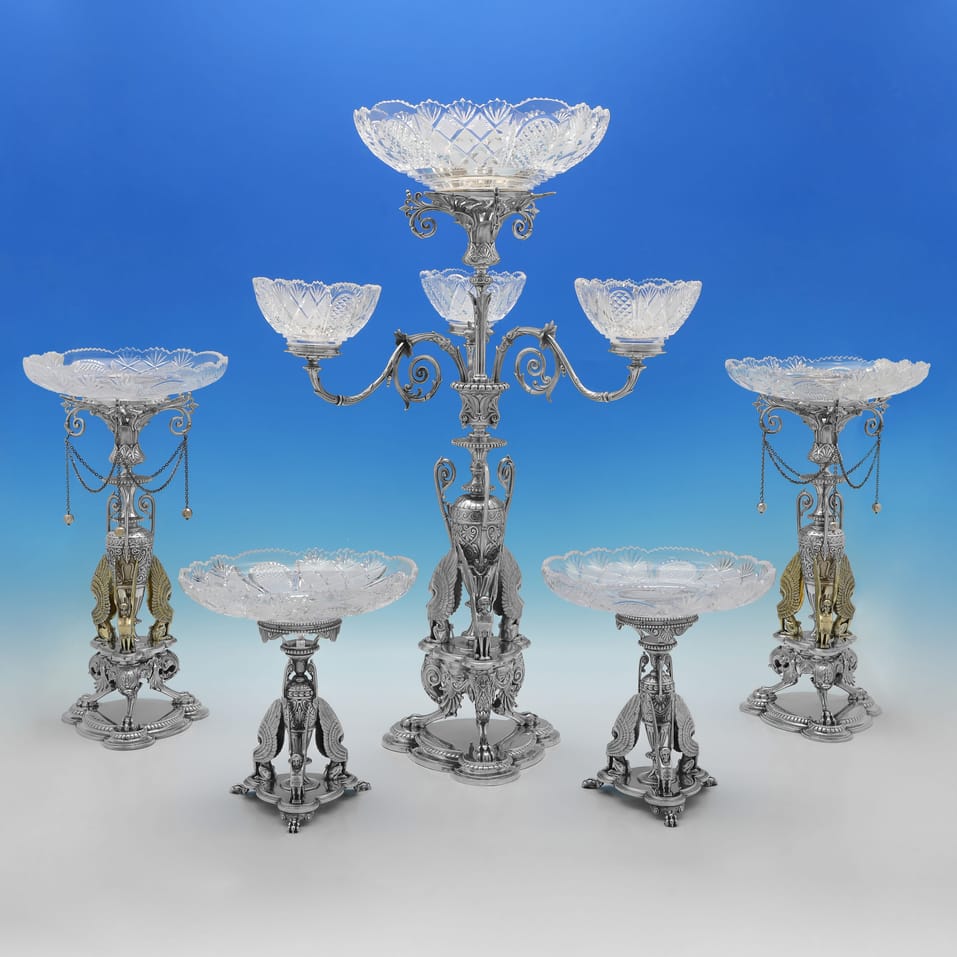Antique Silver Dessert Stands
Becoming popular at the start of the 19th Century, silver dessert stands were designed to elevate food at the table, and were used to serve fruits or cakes after the main meal. Regency examples tend to be entirely silver in construction, whereas later Victorian examples have a glass dish on the top. Styles changed inline with fashions, with Egyptian Revival, Classical designs and Gothic Revival examples being highly sought after today.
3 results
L6685 : Sterling Silver Strawberry Dish
Hallmarked In 1908
Hallmarked in Birmingham in 1908 by Coles & Fryer, this charming, and rare to find, Edwardian, Antique Sterling Silver Strawberry Dish, features a shaped reeded border, a removable sugar bowl and cream jug, and wire feet. The strawberry dish measures 9"(23cm) tall, by 17.5"(44.5cm) wide, by 11.5"(29cm) deep, and weighs 51.3 troy ounces.
£5,275
L7275 : Silver Plate Fruit Stand Centrepiece
Made Circa 1910
Made circa 1910 by Württembergische Metallwarenfabrik (WMF) in Geislingen an der Steige in Germany, this stunning, Antique Silver Plate Centrepiece, stands on a decorative trefoil base, and features cast seated maidens to each side, and central glass dish. The centrepiece is shown in the book 'Art Nouveau Domestic Metalwork from Württembergische Metallwarenfabrik 1906', item number 41, page 58. The stand measures 25.25"(64cm) tall, by 22.25"(51.5cm) wide by 12.75"(32.5cm) deep, and the glass dish measures 13.5"(34.5cm) in diameter.
£20,795
L5623 : Sterling Silver Suite Of Dessert Stands
Hallmarked In 1873
Hallmarked in Birmingham between 1873 and 1885 by Elkington & Co., this incredible, Victorian, Antique Sterling Silver Suite of Dessert Stands, is in the Egyptian Revival style, and comprises a large centrepiece with 3 small glass side dishes, and a larger central glass dish, a pair of medium size dessert stands with glass dishes and gilt figures of sphinxes to the bases, and a smaller pair of dessert stands with glass dishes. The silver of the suite weighs an impressive 347 troy ounces.
The central dessert stand measures 28"(71cm) tall, by 18"(46cm) in diameter. The 2 medium dessert stands measures 17.25"(44cm) tall, by 9.25"(23.5cm) in diameter. The 2 smaller dessert stands measure 9.5"(24cm) tall, by 9.25"(23.5cm) in diameter.
£69,975


